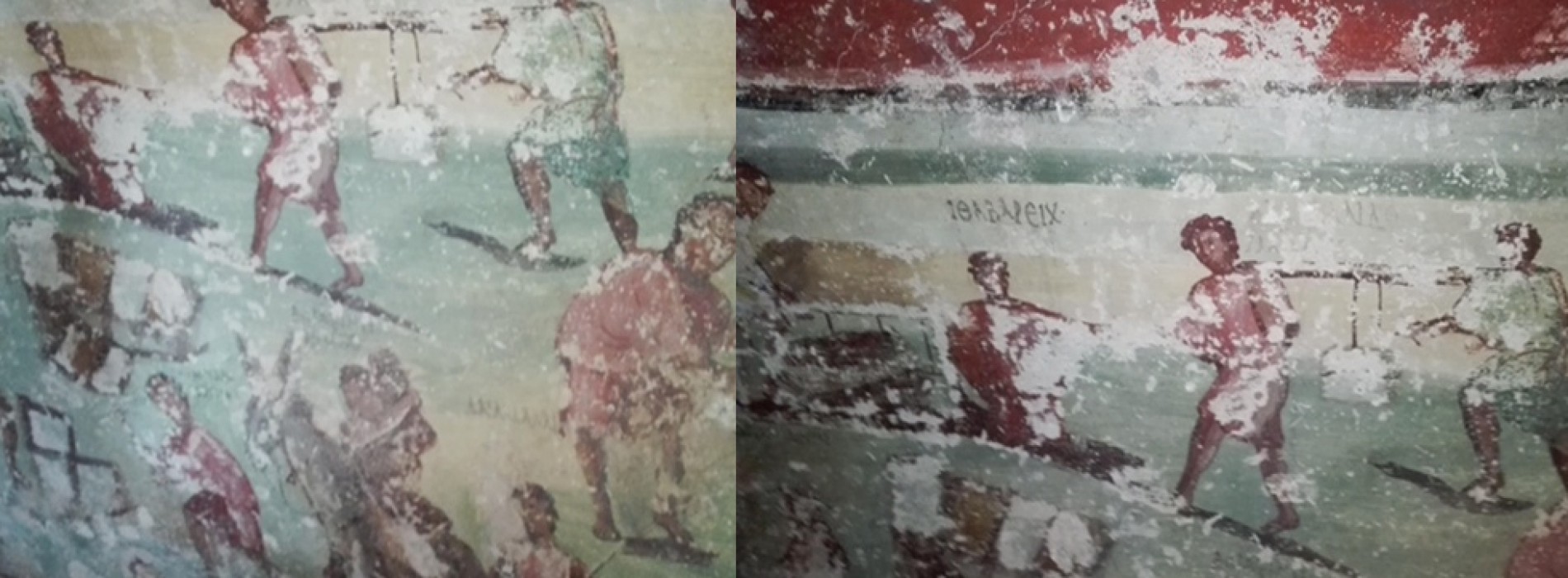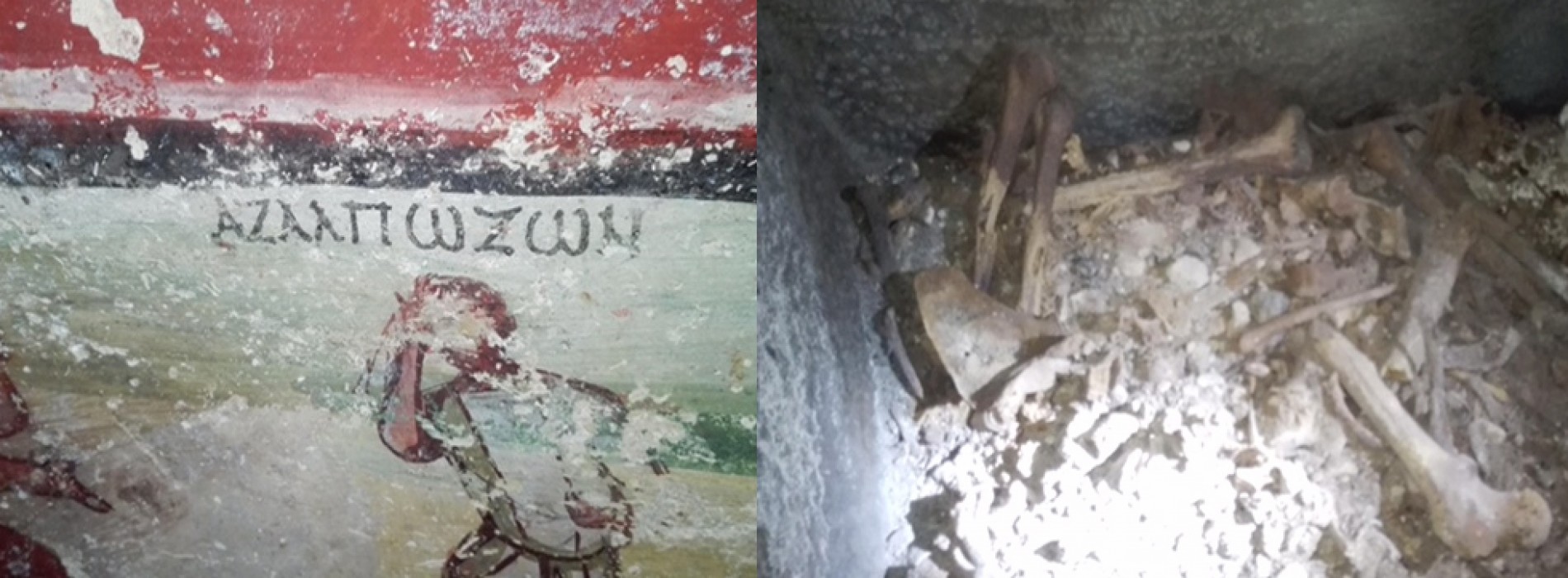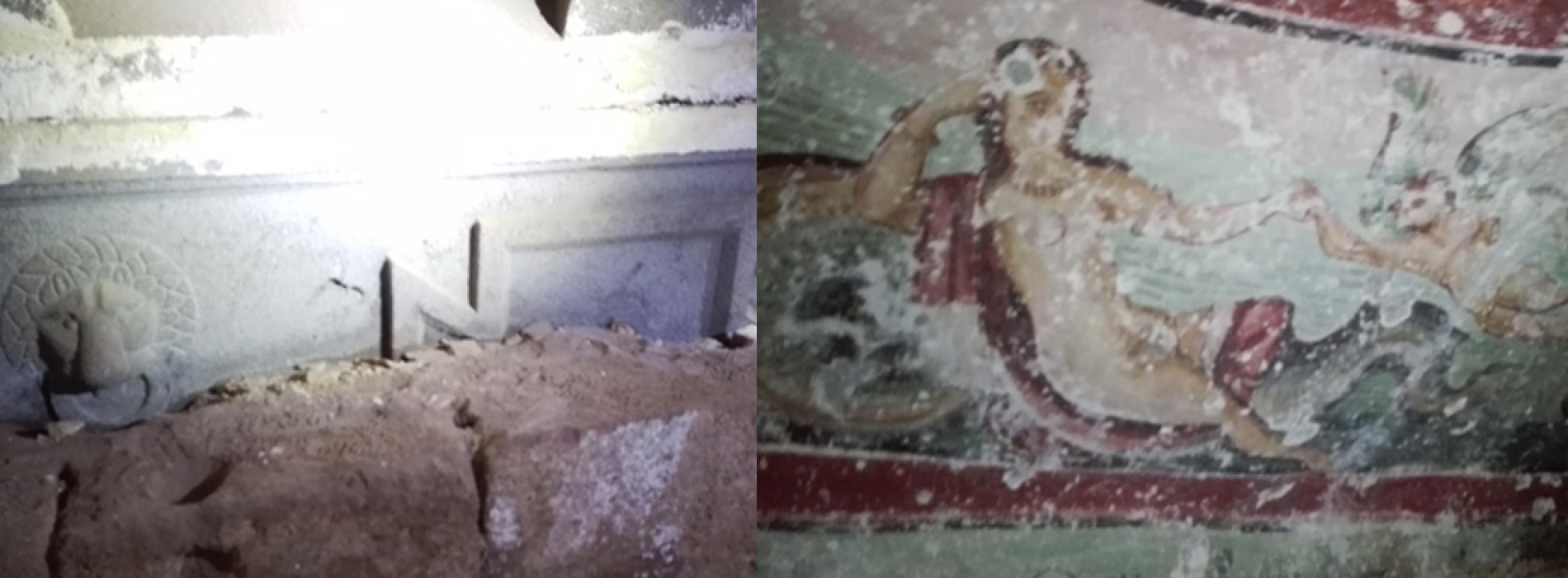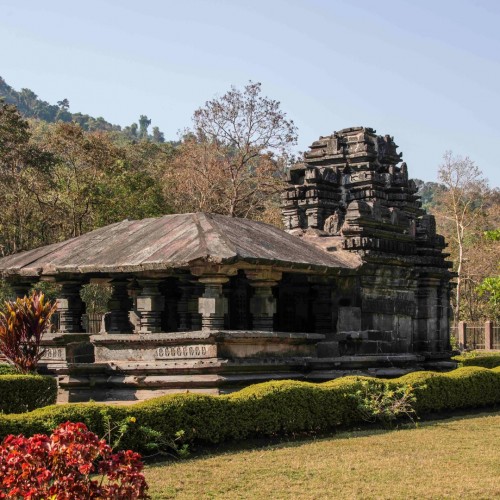A magnificent archaeological discovery in Jordan
An ancient tomb has been discovered in Jordan in the northern town of Beit Ras during an excavation project to expand a local waste-water sanitation network. The tomb includes a cave with two burial chambers. The larger chamber contains a basalt stone rock-cut tomb decorated with raised etchings of two lion heads and with several human bones enclosed. This tomb is made unique by the fascinating oil frescoes decorating the walls of the chamber. The frescoes portray human figures, horses and other mythological scenes, some of which have partly eroded but remain intact for the most part giving us great insight into the burial rites of the past. The second chamber contains two more rock-cut tombs without any artifacts.
These breathtaking frescoes include paintings of grape vines which represent the social and agricultural life prevalent during Classical antiquity thought to most likely belong in the Hellenistic period/ Early Roman period. The inscriptions and some artifacts found in the tomb are being analyzed to give a more accurate time-frame of when this tomb was built and who it was built for.
Her Excellency Minister of Tourism and Antiquities Lina Annab, following a visit to the site, confirmed that the Department of Antiquities will continue to excavate, expand and prepare the site for future visitors. Her Excellency also confirmed that due to the tomb’s archeological value, the site has been closed off to visitors and on-lookers to protect the archeological integrity of the tomb as more tests are being run to ascertain more information about its significance.
On his end Dr. Munther Jamhawi, Director General for the Department of Antiquities pointed to the fact that the city of Beit Ras is one of the ancient Hellenistic/Roman Decapolis League cities, and was known during that time as Capitolias. This city was also mentioned in Arabic poetry as a unique location that included a theater dated back to the second century and the remains of a Byzantine Church whose architectural styles were later used during the Islamic era and specifically during the early Umayyad period.
You might also like
Qatar Airways yet to apply for its plan to set up 100-plane airline in India
Qatar Airways has not submitted application for setting up an airline in India, according to the civil aviation ministry. Qatar Airways has not submitted application for setting up an airline
India needs Rs 2-3 lakh cr investment for new airports says Jayant Sinha
Aviation is going to be one of the major sectors that will drive economy going forward. The country will require an investment of Rs 2-3 lakh crore over the next
Northeast Frontier Railway introduces new technology to tackle fog
The device weighs 1.5 kg and is carried by the loco pilot at the time of assuming charge of the locomotive. The Northeast Frontier Railway (NFR) has introduced a new









